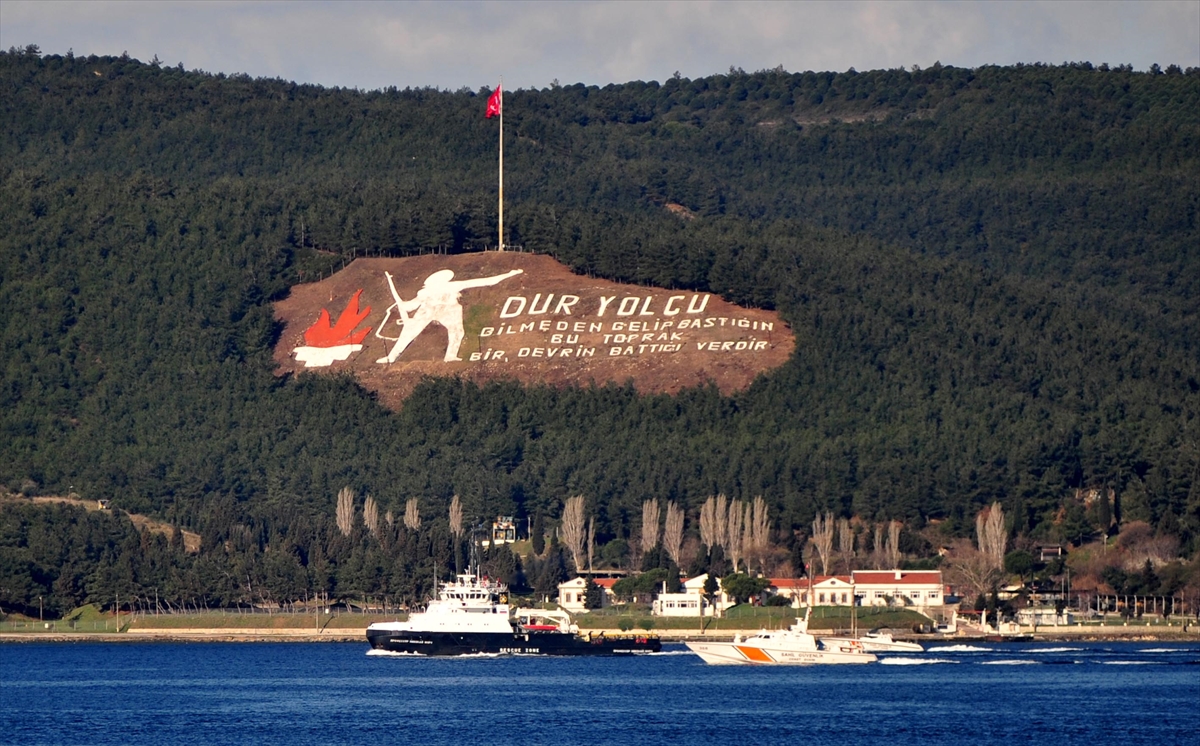Dardanelles

While connecting the Aegean Sea with the Sea of Marmara, it actually connects the Mediterranean Sea and the Black Sea with the Bosphorus. These two strains separate Asia and Europe. The Dardanelles Strait is formed by the submergence of a vast and deep valley opened by rivers 2.5 million years ago. Its length is 78 kilometers near Rumeli, and the shores of the Bosphorus, which is 94 kilometers far from Anatolia, are less intrusive than the Bosphorus. The rocks eroded locally in the coast form steep slopes. But there are small plains and beaches where the rivers flow especially in Anatolia. Here the sea is shallowed with sand and pebbles drifting by the rivers. The shallow shores of the noses of Cardak and Nara in particular cause the ships to land on foggy weather where the distance of vision is diminishing. These shallows are not too wide as the stream of the Bosphorus drains sand and gravel deposits.
The Dardanelles Bosphorus has dual discharge, top and bottom. The upper stream is caused by the fact that the less salty waters of the Black Sea are directed towards the Mediterranean. The depth of the upper stream, which is variable in speed, reaches 20 meters at the mouth of the Marmara of the Bosphorus and drops 10 meters towards the Aegean exit. The sub-currents carry the salty and heavy waters of the Mediterranean Sea to the Marmara Sea. In the middle of the throat is a 50-meter deep groove extending from north to south. On this groove there are deep elliptical pits. The depth reaches 102 meters in front of Nara Burnu and 109 meters in between Çanakkale and Kilitbahir. The narrowest part of the Bosphorus is between 1,375 meters and Kilitbahir-Cimentabya. The widest place is between the Domuzdere shores and Erenköy shores at 8.275 meters.
Dardanelles is the migration route for a wide variety of fish. According to the seasons of fish, they travel from the Black Sea to the Aegean, to the Mediterranean and then to the Black Sea. The type of fish in the Bosphorus is both diverse and very filling. Fish such as horse mackerel, mullet, camphor, mace, sea bass, loupe, tuna, bonito are the most hunted. The Bosphorus is one of our most productive waters. But the decline in the number and variety of fishes due to the rapid increase in marine pollution in recent years is of concern.
The Dardanelles has been the scene of many historical events. There are also many myths about Greek mythology. One of these myths concerns Leandros, the king’s son. Leandros swam from the shore to the other every night to meet her lover Hero. The name of the Dardanelles in Greek mythology is Hellespontos. The word Hellespontos, which means Helle Sea, comes from Helle, the daughter of Athamas, King of Thessalonica. According to the legend, Helle was drowned in the Dardanelles Bottom as she ran away from the persecution of her sister Phryxos and her step mother, on the back of a golden post and a winged coach
The Trojan city on the shores of the Bosphorus is the site of the famous Trojan War, which Homer tells Iliad. In the west, the Dardanelles is generally known as Dardanelles (Dardanel). This name comes from the ancient city of Dardanos, 10 km south of Canakkale. There are also many fortresses from the ancient times on the coast. One of the most famous of the wars is the battle of the great Persian King Kserkses in 480 BC with the Greeks. Xerxes crossed the Dardanelles Straits with a bridge formed by arranging the ships side by side. Alexander the Great passed the throat in 334 BC and conquered Asia. During the First World War, the extraordinary resistance of Turkish armies, which did not give way to British and French naval forces in 1915, is the last war in the throat.





No Comments